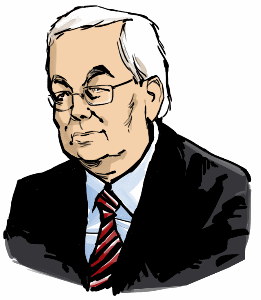© Gunnar Tómasson
5 January 2015.
Francisco Goya – Los Caprichos – Saga Myth – II
Introduction
From Francisco Goya – Los Caprichos – Saga Myth – I
29 December 2014.
Many years ago I saw an exhibition of paintings by Francisco Goya in the Prado Museum in Madrid. I had never seen any of his paintings before but they struck me as familiar! For they appeared to have been selected to show Goya‘s visual construction of concepts from ancient creation myths which I knew well. Thus, I could explain to my late wife the ideas which seemed to be reflected in almost every painting.
Last summer I re-visited the Prado Museum with my sister-in-law and related to her my impression of Goya‘s paintings at the first visit. On our return to Iceland she gave me an excellent Icelandic edition of Goya‘s Los Caprichos – The Monsters – which are described by Wikipedia as follows:
Los Caprichos is a set of 80 prints in aquatint and etching created by the Spanish artist Francisco Goya in 1797 and 1798, and published as an album in 1799. The prints were an artistic experiment: a medium for Goya’s condemnation of the universal follies and foolishness in the Spanish society in which he lived. The criticisms are far-ranging and acidic; he speaks against the predominance of superstition, the ignorance and inabilities of the various members of the ruling class, pedagogical short-comings, marital mistakes and the decline of rationality. Some of the prints have anticlerical themes. Goya described the series as depicting „the innumerable foibles and follies to be found in any civilized society, and from the common prejudices and deceitful practices which custom, ignorance or self-interest have made usual“.
Guðbergur Bergsson, one of Iceland’s foremost writers who lived and worked in Spain for many years, prepared the Icelandic edition of Los Caprichos, including comments on each of the 80 works which he wrote for publication, one work at a time, in an Icelandic newspaper 40 years ago. The last work depicts four human-like monsters screaming in the reader’s face, ‟Ya es hora!‟ – The time has come!
Guðbergur concluded his comments on this last work with the provocative question asked nine times in Völuspá or Sybil’s Prophecy – a majestic Icelandic cosmogonic poem from the Saga Age: Vituð ér enn – eða hvat? – Have you understood – or what?
In an early version of Goya’s series, the first work of the series was entitled El sueño de la razón produce monstrous – The sleep of reason produces monsters. Later, it was replaced by a self-portrait of Goya, and moved to 43rd place.
Might the replacement have been meant to signal that reason had awakened from its sleep within Goya himself?
And, if so, how might one test that hypothesis?
Hypothesis tested
As suggested by the following test, which is based on key Cipher Values in the “hidden poetry” of the Saga Authors of 13th century Iceland and the Shakespeare Authors of Elizabethan England, Francisco Goya (1746-1828) and associates who gave titles to the 80 prints appear to have been intimately familiar with the numerical structure of such “hidden poetry” and associated texts from the King James Bible (1611).
El sueño de la razón produce monstrous = 19212
(a) Saga Myth
8753 = Jesus Kristus
11359 = Snorri Sturluson
-1000 = Spiritual darkness
100 = The End
19212
(b) Shakespeare Myth
2646 = Hamlet (Devil aspect)
8282 = Will Shakespeare (Stage Name)
Idiot‘s Hour on Stage
2602 = 26 April (Shakspere’s Baptismal date)
1564 = 1564
2502 = 2502 (Shakspere’s Burial date)
1616 = 1616
19212
(c) Biblical-Saga Myth
1 = God
7128 = Let there be light.
1000 = Light of the World
9619 = Egill Skalla-Grímsson (Archetypal monster)
6960 = Jarðlig skilning (Earthly understanding)
-5596 = Andlig spekðin (Spiritual wisdom)
100 = The End
19212
Fran co Goya y Lucientes, Pintor. = 14017
(a) Saga Myth
4427 = Út vil ek. (I will out.)
1000 = Light of the World
5596 = Andlig spekðin (Spiritual wisdom)
-4000 = Dark Sword (Impotent Creative Power)
6994 = Örlygsstaðir (Saga scene of Armageddon)
14017
(b) Saga-Shakespeare Myth
11359 = Snorri Sturluson
677 = EK (EGO-Anonymous Author of Brennu-Njálssaga)
-4119 = (End of) Ignorance
6100 = Sonatorrek (Egill Skalla-Grímsson become Great Poet)
14017
(c) Francis Bacon‘s Signature
4000 = Flaming Sword (Götterdämmerung)
-10467 = Osiris-Isis-Horus (Heathendom yields to Christianity)
7000 = Microcosmos (Man in God’s Image)
13484 = The rest was not perfected. (Francis Bacon in New Atlantis)
14017
The Cipher Value of the texts of all 80 Goya prints is 583353.
The “signature” of Francis Bacon through the stand-alone sentence at the end of his New Atlantis – The rest was not perfected – together with the precision of the above web of Saga-Shakespeare-Biblical Myth accords with the suspicion that Bacon’s “death” on Easter Morning, 9 April 1626, was a symbolic re-enactment of Christ’s Resurrection.¹
Guðbergur Bergsson noted in an introduction to his edition of Los Caprichos that it was not clear how the term “caprichos” (or “whims”) was to be construed.
In the context of Biblical-Saga-Hebrew Myth as outlined below, “whims” would seem to denote the illusions and deeds bred by Ignorance of a Don Quixote de la Mancha anciently viewed as the work of The Devil.
Los Caprichos = 583353
Biblical-Saga-Hebrew Myth
Matt. 4:1-11
(King James Bible, 1611)
28613 = Then was Iesus led vp of the Spirit into the Wildernesse,
11214 = to bee tempted of the deuill.
20530 = And when hee had fasted forty dayes and forty nights,
13181 = hee was afterward an hungred.
16482 = And when the tempter came to him, hee said,
10566 = If thou be the Sonne of God,
15281 = command that these stones bee made bread.
18472 = But he answered, and said, It is written,
11833 = Man shall not liue by bread alone,
26509 = but by euery Word that proceedeth out of the mouth of God.
20924 = Then the deuill taketh him vp into the holy Citie,
16520 = and setteth him on a pinacle of the Temple,
8004 = And saith vnto him,
20580 = If thou bee the Sonne of God, cast thy selfe downe:
28489 = For it is written, He shall giue his Angels charge concerning thee,
15292 = & in their handes they shall beare thee vp,
22323 = lest at any time thou dash thy foote against a stone.
19606 = Iesus said vnto him, It is written againe,
17802 = Thou shalt not tempt the Lord thy God.
25356 = Againe the Deuill taketh him vp into an exceeding high mountaine,
20642 = and sheweth him all the kingdomes of the world
8143 = and the glory of them:
22688 = And saith vnto him, All these things will I give thee
19710 = if thou wilt fall downe and worship me.
12627 = Then saith Iesus vnto him,
17837 = Get thee hence, Satan: for it is written,
18110 = Thou shalt worship the Lord thy God,
13398 = and him onely shalt thou serue.
11082 = Then the deuill leaveth him,
17228 = and behold, Angels came and ministred vnto him.
529042
As in 529042 + 10565 + 43746 = 583353.
In Kabbalah, the purpose of our world and the task of Man of Seventh Day of Hebrew Myth, is to unite two parts of the Holy Name of JHWH that is held to have been divided into Male and Female parts at Seventh Day’s Dawn whereby the Holy Name of JHWH will rise again in Creation. In Hebrew gematria, JHWH is represented by 10-5-6-5.
In Brennu-Njálssaga, this aspect of the Saga is represented in two different ways:
- In the name of Brennu-Njáll’s close friend and confidant, Gunnarr Hámundarson, 9880, as in 1 + 7 + 9880 + 677 = 10565, and
- In Brennu-Njálssaga’s Omega sentence – Ok lýk ek þar Brennu-Njálssögu – where EK = 677, refers to the Saga’s Anonymous Author as integral part of Gunnarr Hámundarson.
The Cipher Value 43746 is that of the Alpha and Omega sentences of the entire Saga plus the section on Advent of Christianity in Chs. 100-105:
6257 = Mörðr hét maðr.
12685 = Höfðingjaskipti varð í Nóregi.
11274 = Fara menn við þat heim af þingi.
13530 = Ok lýk ek þar Brennu-Njálssögu.
43746
Footnotes:
¹ “I have been induced to think, that if there were a Beam of Knowledge derived from God upon any Man in these Modern Times, it was upon him; for though he was a great Reader of Books, yet he had not his Knowledge from Books, but from some Grounds and Notions within himself.” Resuscitatio, 1670, Ed. p. 9. Dr. W. Rawley,for many years his chaplain, secretary and confidant. (Alfred Dodd, Francis Bacon’s Personal Life-Story, Rider & Company, London, 1986, footnote, p. 89.)
“Manly Hall, the famous Theosophic and Masonic writer, USA, says that “in the sixty-sixth year of his [Francis Bacon’s] life … he feigned death and passed over into Germany, there to guide the destinies of his philosophic and political Fraternities for nearly twenty-five years after his “death”. Some personally written letters show that Manly Hall has made extensive researches on the Continent and had found sufficient evidence to warrant the foregoing statement. (Op. cit., pp. 540-541)
***
A calculator for converting letters to cipher values is on the Internet at:
http://www.light-of-truth.com/ciphersaga.htm
The Spanish letter ñ – as in El sueño de la razón produce monstrous – is not built into the calculator.
In calculating the Cipher Value of the title, 19212, the letter n is used instead of ñ.

 Gunnar Tómasson
Gunnar Tómasson